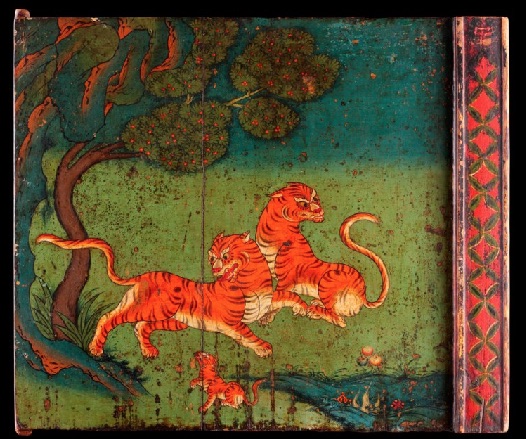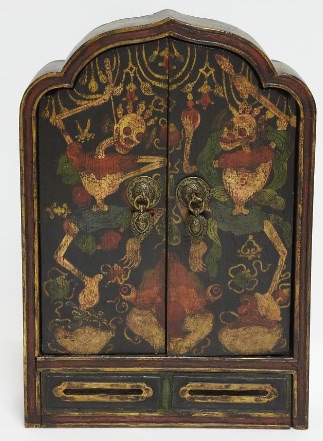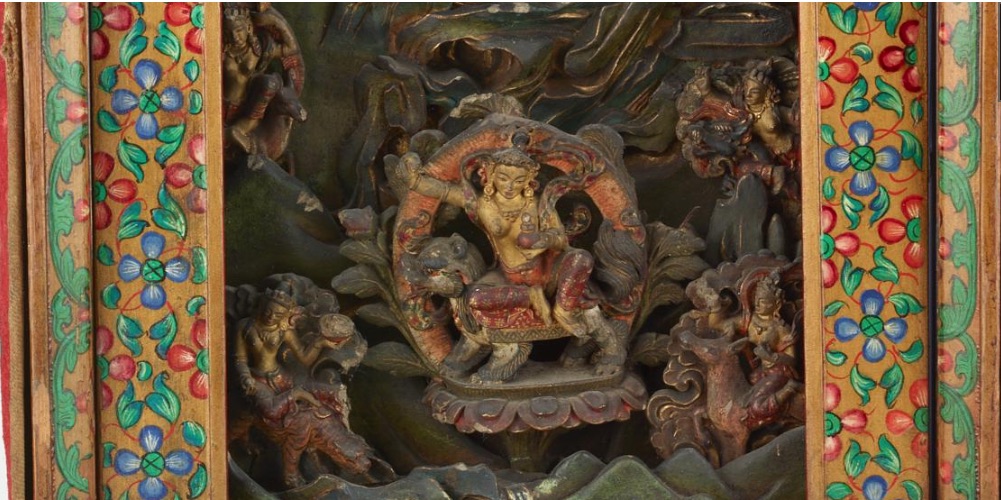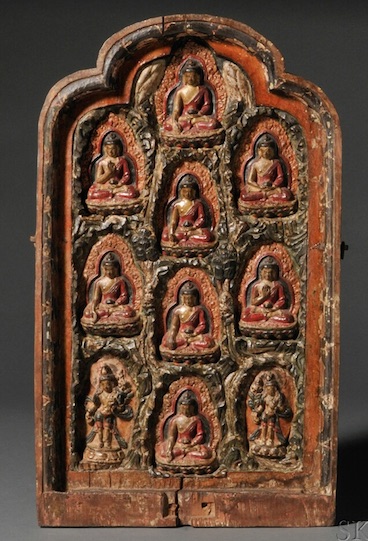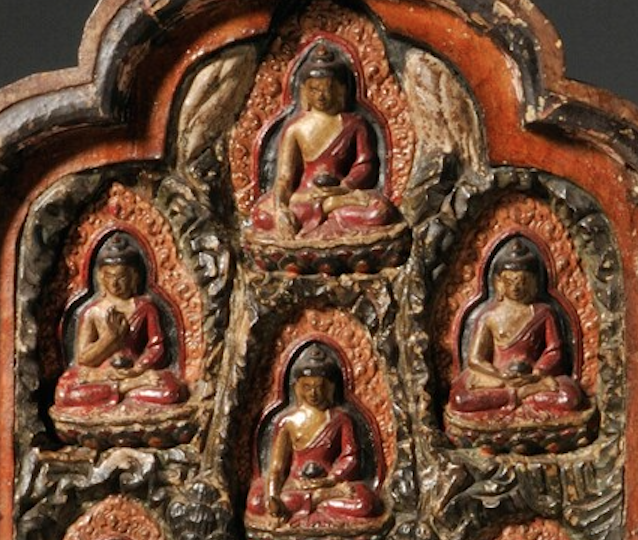19th century, Tibet, ‘portable shrine containing a wrathful female deity on horseback’, fabric and wood, 17,5 cm, accession nº EA2006.123 at the Ashmolean Museum in Oxford (UK).
Palden Lhamo (Shri Devi in sanskrit) is depicted in her one-head and two-arm form, seated sideways on her kiang, using the skin of her dead son as a saddle. Both her and her mount are adorned with skull ornaments. Known as Magzor Gyalmo, this aspect of the deity brandishes a sandalwood staff or club in her right hand while holding a skull cup in the other. She wears a tiger skin loin cloth, a girdle of snakes, and silk garments.



